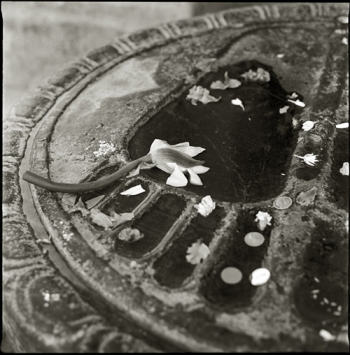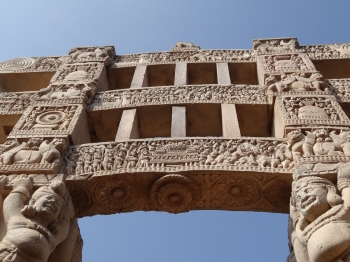In the Buddhist tradition, disciples discover their purpose in life by doing their part for the Buddha’s Dharma. The Buddha is the most profound lover of every sentient being, not just humans, and loves even those that cannot yet understand or are ignorant of him. The Buddha is also the most intimate knower of each individual’s true nature, for all beings possess Buddha Nature: the true nature, the nature of Buddha. By seeking and serving the Buddha, human persons move toward wholeness by cultivating their inherently enlightened nature for the benefit of others. This helps them to know the most sublime and lasting happiness life can offer.
We could refer to this way of life as a Buddho-centric one, a life that is devoted to the Buddha. How can it be cultivated in the context of modern society, which offers plenty of convenient advantages as well as many distracting hindrances?
In the nature religions of very old cultures, the human being is made of five elements: earth, air, water, fire, and spirit. It is emphasized that the body, made of the first four components, must be cared for. But there is another aspect that must be nourished, and that is the fifth element: the soul or locus of consciousness. Without a balanced approach to rest, work, and play, we deteriorate in our wholeness. It is important for us to be grounded in our way of life. We have to walk our path without straying too far to one side or the other.
Buddhism’s understanding of the soul and consciousness is, of course, extremely sophisticated. But it finds common ground with the nature spiritualities when the latter urge for the care of the whole human person in all his or her aspects. The Middle Path teaches us that it is useless to chasten the flesh in the name of spiritual progress, but it is also counterproductive to indulge the body in endless urges and pleasures. By maintaining a moderate balance between discipline and leniency, disciples are able to practice authentically without feeling drained or exhausted.
The Indian sages that preceded Siddhartha Gautama divided a human being’s duty into four purusharthas. This word roughly translates into “duties of a human being.” The four duties were: Dharma, or the practice of righteousness, artha, or working toward prosperity for a comfortable life, kama, or the enjoyment of the senses, and moksha, spiritual liberation. The least noble or commendable of the four strivings was kama, whilst the highest was moksha. Release from the world of illusions was the ultimate objective of the Vedic and Brahmanic faiths. But it should not be misunderstood that moksha was the only duty laypeople needed to perform. There was not one purushartha, but four. Human beings’ lives were to be flourishing and filled with pleasure and intimacy. Moksha only reminded them that their lives were to be ultimately oriented toward the goal of spiritual liberation.
Returning to the theme of “caring for the whole person”, the Buddhist tradition stresses balance and harmony in practice. In Shakyamuni’s Middle Way and Eightfold Path, the four purusharthas were all subsumed within a comprehensive system of living that was congruent with the Buddhist vision. This is an important emphasis to make, so that we do not misconstrue the Way as an ascetic journey of self-punishment. Historically, many ancient Buddhists were born into the royal or knightly classes, but they still found the humility to recognize the true Conqueror (Jina) in the Buddha. Re-framing their lives Buddho-centrically did not demand that they give up all their prosperity. It meant that they abandoned mundane grasping and dedicated their daily lives to the selfless example of the Teacher of Gods and Humans.
The needs of modernity are not totally different from those of the ancient Buddhists. If our everyday activities are undertaken as “rafts” for Dharma (in the same way Dharma is the raft to Nirvana), we will no longer be bound by the dialectics of samsara. To be ensnared by worldly craving and attachments is to lose sight of the Buddho-centric way of life. To regress from this way of life through negative habits or failing to cultivate wholesome states of mind would be an unfortunate waste. Conversely, when one glimpses the fruits of working for a transcendent goal that embraces everything, even one’s mundane daily work becomes reinforced with purpose. Virtue becomes not just a habit, but second nature. And finally, we realize that that “second nature” was our true nature all along. Our true nature and vocation is to serve sentient beings for the Perfect One, who gives meaning to all.

















